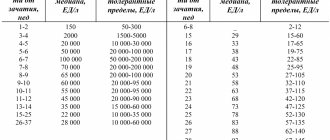The postpartum period is a difficult time in a woman’s life, which is overshadowed by prolonged vaginal discharge. What discharge is considered physiological and what indicates the need to see a doctor - read in this article.
Lochia is a specific discharge from the vagina after childbirth, which is a natural process and consists of blood, mucus and endometrium. Such discharge indicates the reverse development of the uterus, its contraction and return to its prenatal state.
Why does postpartum discharge occur?
During pregnancy, a new organ is formed - the placenta. The placenta is attached to the wall of the uterus, forming common vessels with it. Due to these vessels, the child receives the nutrients he needs throughout the entire period of intrauterine development.
After the baby is born, the placenta detaches from the uterine wall. As a result, fairly large vessels remain open. Heavy bleeding occurs and will last for two or three days. This type of discharge is called lochia. The uterus contracts rapidly after childbirth, so gradually the vessels are compressed by muscle fibers, and the discharge disappears.
Lochia consists of blood cells, as well as plasma, mucus and epithelial cells lining the uterus.
Lochia after childbirth has its own characteristic features at each stage of rehabilitation. If the discharge does not correspond to the norm, doctors should be wary and conduct additional examinations.
The first postpartum discharge is called pure blood, since this is what it looks like outwardly. And that's quite normal. Their duration is approximately 2-3 days. Subsequent discharge is far from the classical understanding of bleeding.
Normal discharge
Discharge after childbirth lasts for 4-6 weeks, which is exactly how long it will take for the reverse development (involution) of the uterus after pregnancy and childbirth. Their number decreases over time, which indicates healing of the wound surface. Not only their number changes, but also their color. At each stage of the postpartum period, lochia must meet certain characteristics, deviation from which can become an unfavorable diagnostic sign.
Early postpartum period
– the first 2-4 hours after birth. All this time, the woman should be under close supervision of medical personnel, since this is the time when complications arise due to impaired contractility of the uterus during labor and the development of hypotonic bleeding.
important The discharge immediately after childbirth is bloody and profuse, but its amount should not exceed 400 ml (taking into account blood loss during childbirth). The general condition of the woman is not impaired. But if suddenly during this time you feel dizzy and weak, and the padding diaper is all wet, tell your doctor immediately!
If the early postpartum period went well, then the woman is transferred to the postpartum department. The late postpartum period begins
which lasts up to 6 weeks.
The first 2-3 days after birth, lochia is bright red in color, due to the predominance of erythrocytes in its composition. They are quite abundant, so it is difficult to get by with ordinary sanitary pads; it is better to use special postpartum ones.
By 3-4 days, lochia takes on a bloody-serous appearance; leukocytes predominate in their composition. The normal course of the postpartum period is monitored by the doctor by daily rounds of the wards. It evaluates the amount and nature of discharge, as well as the process of involution (restoration) of the uterus.
By the time of discharge from the maternity hospital on days 5-7, vaginal discharge acquires a brown tint, mucus appears in it, and it becomes scanty. During the physiological course of the postpartum period, lochia has a peculiar musty odor.
In order to avoid postpartum complications in the maternity hospital, the following recommendations must be followed:
- Go to the toilet and empty your bladder frequently, even if you do not feel the urge to urinate;
- Attach the baby to the breast at his first request;
- During the day, lie on your stomach more often;
- Place ice bags on your lower abdomen.
All these actions contribute to better contraction of the uterine muscles. By contracting, they close open blood vessels, preventing blood loss.
Some women, according to indications, in order to prevent bleeding in the postpartum period, are prescribed injections of oxytocin, a hormone that promotes better contraction of the uterus, for 2-3 days.
After being discharged home, the woman must control her condition herself. She needs to continue to monitor the nature and amount of discharge. It is very important to notice changes in time.
information After childbirth, discharge usually lasts 5-6 weeks. Within 6 weeks, about 500-1500 ml of lochia are released. Every day their number decreases, gradually acquiring a yellowish-white color (due to a large amount of mucus), and may contain streaks of blood. Already by the 4th week after birth, the discharge becomes scanty, “spotting”, and by the 6th week the lochia stops altogether.
For women who have had a caesarean section or those who are not breastfeeding, things may happen more slowly as the uterus contracts less. In this case, discharge can last up to 8 weeks.
Early postpartum period
In the first two to four hours after birth, a woman should be under the supervision of doctors and nurses. This is due to the fact that as a result of impaired contractility of the uterine muscles, serious bleeding may occur that threatens the life of the young mother. Such bleeding is called hypotonic; it develops due to relaxation of the uterine muscles. That is why, immediately after giving birth, women remain in the birthing unit for some time.
After childbirth, blood is normally released very intensively, and the total volume of secretions should not exceed 400 ml. Despite the rather impressive volume of blood released, women feel fine. True, severe weakness and dizziness may occur, which is considered normal.
To avoid increased bleeding, which is life-threatening, women who have recently given birth in the department undergo the following procedures:
- A special catheter is inserted to completely empty the bladder.
- Place an ice compress on your stomach.
- Drugs are administered intravenously to enhance contractile activity of the uterus.
A woman should pay great attention to her condition: the first hours after childbirth are especially dangerous; quite massive bleeding may develop. If you feel that the diaper is completely saturated with blood, feel pain or severe weakness, immediately notify the department staff.
After childbirth, the doctor should examine the external genitalia. If a woman has had tears that are not stitched up carefully enough, blood will accumulate in the tissues. In such cases, it is urgent to open the hematoma, empty it and re-suture the damaged tissue.
Hygiene
To prevent an ascending infection, it is enough to follow simple hygiene rules:
- on the first day, do not use pads, but replace them with sterile diapers;
- on the second day of the postpartum period, you are allowed to switch to regular pads with the maximum number of “drops” on the packaging, which must be changed at least 8-9 times a day;
- after each visit to the toilet, wash with warm water directed from top to bottom;
- use baby soap for hygienic purposes;
- wash only the external genitalia;
- take a warm shower every day (but not a bath!);
- use wound healing medications recommended by your doctor.
Regardless of how much spotting occurs after childbirth, it is forbidden to use vaginal tampons in the postpartum period: they not only retain the secreted fluid, but also contribute to the proliferation of microflora.
Discharge a few days after birth
In the first three days after birth, lochia should be released quite abundantly, although in a smaller volume than in the maternity ward: as a rule, the pad is completely saturated in two hours.
Discharge during this period resembles menstrual discharge: it contains clots and has a characteristic odor. During movements, such as walking, the discharge becomes more intense.
However, you should not think that the danger has passed: sometimes bleeding can begin a few days after birth. To avoid this, you should follow these simple recommendations:
- empty your bladder on time. A woman must visit the restroom at least once every three hours. A full bladder prevents the uterus from contracting properly;
- feed the baby on demand. When feeding, a woman may feel quite intense pain in the lower abdomen. There is no need to be afraid of this: this phenomenon is completely normal. Discomfort is associated with increased uterine contractions;
- Rest as often as possible, lying on your stomach. After childbirth, the tone of the abdominal muscles is weakened, as a result of which the uterus deviates back and the outflow of lochia is disrupted;
- Apply an ice compress to your stomach several times a day.
If the birth was difficult or the uterus is stretched too far, the doctor may prescribe intramuscular injections of oxytocin.
How to speed up the process of lochia discharge - video
Heavy physical activity in the postpartum period is prohibited. But lying down exercises, on the contrary, will speed up the process of contraction of the uterus, discharge of secretions and strengthen the muscles of the abdomen and pelvic floor. The only condition is that before performing it, consult your doctor. Here is one of the options for such rehabilitation gymnastics:
Today we discussed only one side of this multifaceted coin. The presence of lochia after childbirth is an inevitable and physiological process . And it depends not only on the rate of endometrial regeneration. It is also affected by the degree of contraction of the uterus, the presence of cracks or ruptures in the cervix, whether it is the first birth or a repeat one, whether the pregnancy was singleton or multiple. The time of onset of the first postpartum menstruation also depends on these factors. But that's a completely different story...
How does the process work in your case? Were you previously informed about its stages and possible complications? Do you keep a diary of changes in your body? Share your feelings and changes in the comments.
Bleeding in the postpartum period
So-called late postpartum bleeding can occur for a variety of reasons. For example, if the placenta has not been delivered completely, bleeding may begin two to three days after the baby is born. The doctor can determine whether the placenta remains in the uterus during an ultrasound. This will require surgery under general anesthesia: doctors will need to clean out the uterus and cauterize the blood vessels.
Sometimes bleeding can be caused by bleeding disorders. Stopping such bleeding is quite difficult, so it is important to avoid its development. As a rule, women are aware of the presence of diseases that lead to bleeding disorders and report them to the doctor in advance.
Most often, bleeding is due to the fact that the muscles of the uterus do not contract intensely enough. The main danger is that a woman loses a large volume of blood without experiencing pain. To eliminate such bleeding, special drugs are introduced that force the uterus to contract more intensely. In case of severe blood loss, transfusion of blood and its preparations is recommended.
A complete cessation of discharge threatens health no less than intense bleeding. If for some reason the outflow of secretions is impaired, lochia remains in the uterine cavity. The accumulation of lochia must be eliminated in time, otherwise serious inflammatory processes may begin in the uterus, which can lead to infertility.
What to do
If a woman is diagnosed with postpartum bleeding that does not meet the norm, in order to treat the pathological process it is necessary to determine the cause of its occurrence. The source of the problem can be determined by visual examination of the patient or by ultrasound scanning. A blood test and vaginal smear may be ordered if a bleeding disorder or infection is suspected.
When the 3rd stage of labor is complicated by placenta accreta, in order to prevent bleeding, it is removed manually. The procedure is performed under anesthesia.
When the blood has stopped flowing, but accumulates in the uterine cavity, a woman may be recommended an abdominal massage, an oxytocin injection, or curettage.
If the lochia progressed without pathologies, but bleeding began in the late labor period, it is necessary to call an ambulance. Until the doctors arrive, the woman needs to lie on her back with a cushion under her buttocks.
How to stop
Stopping postpartum hemorrhage caused by pathological causes can only be done in a hospital setting. If the birth canal ruptures, the woman needs stitches. If during the ultrasound scanning remnants of placental tissue were detected, the patient is cleaned, i.e. scraping. If an infection is suspected, antibiotic therapy is prescribed.
Important information: What to do when your tongue bleeds when bitten and how to stop the bleeding
If a woman has weak blood vessels, she may be prescribed calcium gluconate. It is not an emergency measure to stop uterine bleeding. It is often used in combination with other drugs.
Major blood loss can be prevented with the following medications:
- Dicynone;
- Aminocaproic acid;
- vitamin K.
To reduce blood loss during uterine atony after the birth of a child, a woman can undergo external, internal or combined massage.
The treatment method is selected individually for each woman based on the totality of medical information about the patient. In critical situations, when all previous attempts to stop the bleeding have not brought positive results, a hysterectomy may be performed. The operation involves removing the uterus. After it, the woman is deprived of her reproductive abilities, but such surgical intervention can save the patient’s life.
Trying to shorten the duration of uterine discharge (lochia) on your own is not recommended if postpartum recovery of the body proceeds without complications.
When to go to the doctor
The appearance of bleeding in the early postpartum period is diagnosed immediately, because at this time the woman is under close medical supervision. If the woman in labor has already been transferred from the maternity ward to the ward, the reason for an unscheduled examination may be an increase in the volume of lochia, a progressive deterioration in health, an increase in temperature and the appearance of pain in the abdominal area.
A woman should go to the doctor if there is any suspicion of a pathological process.
You should undergo a routine examination by a gynecologist after the uterine discharge has stopped, regardless of whether there were any health problems after childbirth.
Postpartum discharge after discharge from the hospital
The discharge will continue for at least two months after giving birth. Of course, their volume is gradually decreasing. For example, a week after giving birth, the discharge resembles the usual menstruation. At the same time, their volume decreases every day. In addition, the discharge changes color: if at first it is red or brownish, then a couple of weeks after birth it becomes lighter and acquires a yellowish tint.
In women who feed their baby with breast milk, the discharge stops in a shorter time than in mothers who prefer artificial feeding. Due to the release of oxytocin during feeding, paroxysmal pain may be felt in the lower abdomen, which disappears without a trace a few days after discharge from the hospital.
Symptoms of inflammatory processes
If a woman, after being discharged from the hospital, does not carefully monitor her hygiene or begins sexual activity too early, she may develop inflammation. An inflammatory process should be suspected if:
- The discharge has a greenish tint.
- They became more liquid and plentiful.
- The discharge has an unpleasant odor.
- The woman is worried about discomfort in the lower abdomen, fever, weakness and chills.
If you notice such symptoms, you need to urgently consult a doctor: inflammation of the uterus can lead to difficulties in carrying subsequent pregnancies and even to infertility.
To avoid the development of the inflammatory process, after returning from the maternity hospital, a woman should follow the following recommendations:
- carefully monitor hygiene: wash your face daily and change pads as often as possible (every 2-3 hours);
- do not overheat the stomach, that is, do not take a bath;
- be sexually active only after the discharge has completely stopped;
- It is forbidden to douche: this can introduce pathogenic microorganisms into the vagina;
- do not use tampons that interfere with the process of normal secretion. In addition, tampons, when saturated with secretions, become an excellent environment for the development of pathogens, which can provoke inflammation.
When to see a doctor
A woman who has just given birth needs to carefully monitor her well-being and the nature of her discharge.
You will need to see a doctor in the following cases:
- If the bloody discharge suddenly stops a week after giving birth. This is by no means a cause for joy. Perhaps a blood clot blocked the cervical canal or the uterus contracted poorly. This means that pieces of membranes could remain inside. In this case, additional stimulation of uterine contractions with oxytocin is carried out. In some cases, manual cleaning or using a vacuum aspirator.
- Discharge after childbirth with an unpleasant odor. A sour, fishy or rotten smell - in a word, foul - can indicate pathology. This could be an infection, vaginal dysbiosis or colpitis.
- Pain in the lower abdomen along with foul-smelling discharge may indicate endometritis. Endometritis is an inflammation of the lining of the uterus. Body temperature may be increased. However, it should be borne in mind that postpartum fever can also be associated with the establishment of lactation. The first flow of milk often occurs with an increase in body temperature.
- Too yellow discharge may be normal, or it may indicate the presence of pus in the composition.
If, after childbirth, discharge with an unpleasant odor bothers a woman, it is better to play it safe and consult a doctor. This may indicate infection of the birth canal or that pieces of the placenta may have remained in the uterine cavity.
In any of these cases, you should see a doctor for a smear test or an ultrasound scan. As a rule, a woman who has given birth is discharged from the maternity hospital only after an ultrasound scan of the uterine cavity. Only in this case can you be sure that the uterine cavity has been cleared of clots and membranes.
Sometimes there is a black discharge. There is no need to panic - this is the norm and occurs due to hormonal changes in the body.
After the discharge stops, a routine examination by a gynecologist is necessary.
Discharge after childbirth with an unpleasant odor
One of the characteristics of such secretions is the smell. Normal postpartum discharge smells like blood. This is not surprising, since their main component is blood. 7 days after the end of the scarlet and brown discharge, the smell takes on notes of sweetness.
An unpleasant odor should be alarming, as it is a consequence of health problems. Women characterize it differently: “Fishy smell”, “The smell of rot”, “They stink”. This is a rather alarming symptom. Even if the discharge is light in color but smells bad, you should see a doctor.
The smell of discharge
After childbirth, the smell of lochia can also be used to judge how well the uterine restoration process is normal.
For the first days, a combination of the smells of fresh blood and dampness is considered normal. Then it should be replaced by such features as rottenness or mustiness.
Harshness of smell, sour notes or a hint of rot are considered abnormal. If the smell is accompanied by deviations related to the color, composition or number of lochia, you should immediately contact a gynecologist. Waiting for everything to go away on its own is unacceptable.
Green discharge after childbirth
If the discharge turns green 2 months after birth, then the body’s functioning is clearly impaired. Green discharge after childbirth is far from normal. Green color indicates the presence of a bacterial infection in the uterus or vagina. It is very important to start treatment immediately. Otherwise, there is a possibility of developing endometritis. As a result of this disease, the inner lining of the uterus becomes inflamed.
Green postpartum discharge is characteristic of the following diseases:
- Gonorrhea.
- Chlamydia.
- Gardnellez.
Also, discharge after childbirth becomes green due to trichomoniasis. Trichomonas settles in the vagina. If the disease is not treated, the infection will rise higher and higher over time.
Primary symptoms of trichomoniasis:
- Foamy discharge
- Green color
- Itching
- Irritation
- Burning
In some cases, redness of the mucous membranes is observed. With immediate treatment, the disease can be dealt with fairly quickly and the infection can be prevented from spreading further.
Changes in the amount of discharge
The most common reasons for this are retention of parts of the placenta inside the uterus or the addition of an infectious process. In this case, the following deviations from the norm are possible:
- A small amount or premature termination may be associated with a mechanical obstruction to the outflow of intrauterine discharge. Usually this is a large blood clot that blocks the internal os of the cervical canal. Blood can accumulate in the uterus even if it is in an incorrect position as a result of subinvolution. The likelihood of such a complication increases with abnormalities in the structure of the uterus, adhesions in the pelvis, and various neoplasms (cysts, tumors).
- Abundant flow of mucous fluid may be a sign of perforation (perforation) of the uterine wall, for example, if postoperative sutures fail. Abundant lochia is also observed with blood clotting disorders. This sign may be a symptom of a life-threatening condition and requires immediate medical attention.
Any pathological changes should be eliminated as quickly as possible. Some of them require drug treatment, while others require curettage or surgery.
Brown and bloody discharge after childbirth
Bloody discharge after childbirth occurs quite quickly. They usually end a few days after birth.
If brown discharge after childbirth is observed 2 months later, then this should be regarded as a pathological reaction of the body. The color of clotted blood is brown. There are enough reasons for such discharge (hormonal imbalance, menstruation, etc.). Their character may seem unusual, as hormonal levels have changed. Other causes include uterine fibroids and endometriosis.
If spotting is observed or begins 2 months after birth, even if breastfeeding, you should seek help from specialists. There can be two explanations for this phenomenon: the onset of the menstrual cycle or inflammation. However, discharge is not always accompanied by unpleasant sensations. Bloody discharge may be due to the presence of polyps or tumors. They may stop for a while, and after a certain period begin again. In this case, you should definitely undergo a medical examination. If it turns out that the discharge is menstrual, then you should protect yourself. Restoration of the cycle is accompanied by the formation of lactation crises. During menstruation, the amount of milk decreases, this is a natural process. New mothers should be patient and continue breastfeeding.
Warning signs
Despite the fact that spotting after childbirth is the norm, it requires close attention from doctors, since sometimes the development of a pathological condition can be determined by the lochia.
- A very dangerous symptom is the presence of blood in postpartum blood for a fairly long time.
- Very profuse lochia (you have to change more than one pad per hour).
- The presence of large blood clots in the discharge.
- The appearance of bright red discharge on the 4-5th day, which does not stop even when lying down.
- Unpleasant smell of lochia.
- High body temperature and chills.
- Complete cessation of postpartum discharge in the first week (this condition may indicate blockage of the cervix with a blood clot, or a kink in the uterus).
Mucous postpartum discharge
A week later, small amounts of mucous discharge after childbirth are normal. At this stage, the uterus continues the cleansing process, the mucous membranes responsible for the formation of mucus restore their function. Over time, the amount of discharge will decrease.
In the future, lochia should almost completely disappear. If mucus continues to form, this is a sign of ovulation. Outwardly, they look like a thick mass, somewhat reminiscent of egg white. Ovulation can begin after 2-3 months if complementary foods are introduced during breastfeeding. Eggs in non-breastfeeding women mature after the second month. In some cases, this process may begin earlier. Getting pregnant at this moment is highly not recommended, since the body has not yet had time to recover. Care must be taken to protect yourself.
What do lochia look like?
Lochia is a natural vaginal discharge that appears in a woman after childbirth. Consist of:
- particles of the uterine layer;
- ichor;
- parts of the placenta;
- mucous inclusions.
Discharge occurs due to the restoration process occurring in the uterus.
After childbirth, wound damage remains on the surface of the organ. Lochia comes out until he has fully recovered and the injury has healed. Read also: first discharge after childbirth.
Visually, the discharge after delivery resembles monthly menstruation. The composition may contain remnants of fetal membranes. Gradually, the volume and appearance of the lochia will change.
Over time, the lochia will become less intense. Their duration and appearance directly depend on the following factors:
- whether the woman in labor is breastfeeding;
When feeding, the duration of discharge is shorter
- the girl’s age and level of physical activity;
- blood clotting;
- newborn weight;
- were there any complications during childbirth;
- method of delivery - natural or caesarean section.
Basic standards of appearance are presented in the table.
| Compound | For the first four days, only blood is present. Probably a small amount of clots. Starting from the second week, a woman may notice mucus with clots. In the future, spotting will be observed, probably bloody. |
| Color | The first 4-5 days the discharge is bright red. A little later they will acquire a brownish tint. After a month, the discharge will become white or even transparent. |
| Smell | At first there is a distinct smell of blood. There should not be a sharp or even rotten aroma. |
Any deviations from the norm are a good reason to consult a doctor and, if necessary, undergo an examination. Before discharge from the maternity ward, medical personnel usually inform you about what lochia should be so that the woman, especially the first-time mother, does not worry.
The doctor should explain to the girl what normal discharge should be like.
White discharge after childbirth
Discharge after childbirth of this nature indicates the presence of thrush. This disease very often worsens when the immune system fluctuates. Thrush is fairly easy to diagnose. The course of this disease is accompanied by burning, itching, irritation and the appearance of cheesy discharge with a sour odor. Such discharge will not go away on its own. The reason for this is a weakened body that is simply unable to cope with the constantly multiplying fungus. Local immunity is not enough, so outside help is required. If the discharge smells like fish, then this is a clear sign of gardnerella or dysbiosis. Gardnerella is a pathogenic organism that is constantly present on the vaginal mucosa. Under favorable conditions, it multiplies, which leads to odor and itching. Quite often, the proliferation of Gardnerella occurs with the simultaneous occurrence of thrush.
Periods after childbirth
Many women are interested in when the menstrual cycle will be restored. It is impossible to give a definite answer to this question: each person’s body is individual, so everyone’s periods come at different times after childbirth.
During breastfeeding, the body produces prolactin, a hormone that prevents the maturation of eggs. Naturally, as long as prolactin is produced quite actively, menstruation will not appear.
If you do not breastfeed your baby and give him formula, the cycle may be restored two to three months after discharge from the hospital. If the baby is fed breast milk, menstruation comes immediately after the end of lactation. Until this moment, they may either be completely absent or come extremely irregularly.
After giving birth, a woman should monitor the condition of her body as closely as possible. It is important to follow all hygiene rules and follow doctors’ recommendations: then you will be able to quickly recover after the birth of your long-awaited baby and enjoy the happiness of motherhood, without being distracted by health problems and postpartum discharge.









